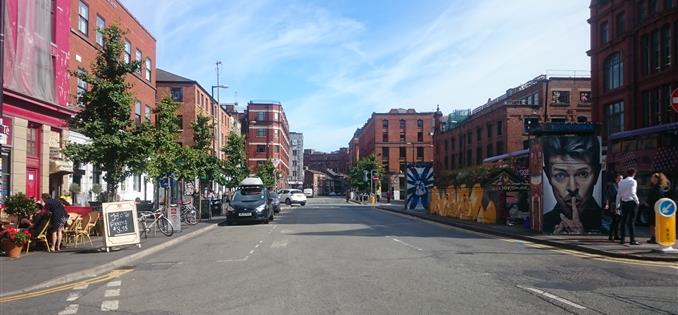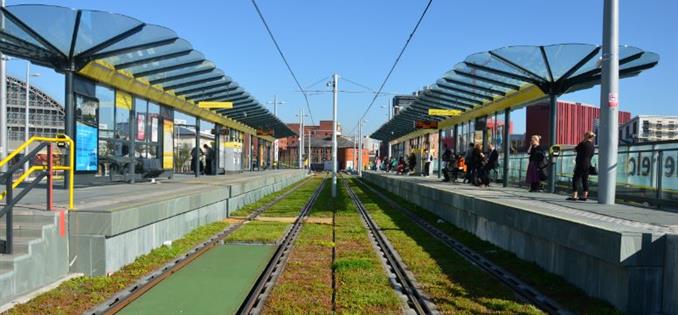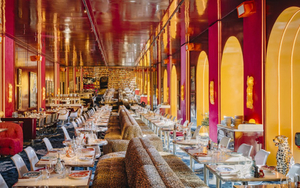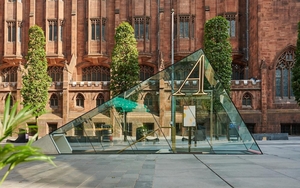WHEN a Gardens without the gardens is the best park a city centre can offer, you know there’s a serious issue with a lack of green space. Thus is Manchester city centre; beautiful, exciting, diverse, but cuts short when it comes to grass.
Alleviation from urbanity with its pollution and isolation can only come from nature
Heaton, Wythenshawe, Alexandra, Manchester has picturesque suburban park spaces, but the city centre grinds concrete urbanity without a care for its leave-strewn annexes. Not even a small square of grass much-used by residents is safe in Castlefield. Nor was Pomona Island considered as a Retiro or Englischer Garten for the rapidly expanding Manchester city centre and Salford Quays to relieve pollution, provide free social space and combat climate change.
Yet Manchester city centre is becoming greener even without the park.
Local residents plant and grow all variety of vegetables in eighteen Northern Quarter Growboxes. Several community boxes are open for all, turning a small corner of a Piccadilly Basin car park (main image) from grey to green. Though current plans for the site don’t include the growboxes.
“The great success of the Growboxes is that they bring people together.” Says Rebecca Taylor, a Curiousity Bureau partner and Northern Quarter Growboxer since the first was installed in 2009. “In a city, you can be isolated despite being surrounded by people. The Growboxes provide a place and time to socialise.”
 Flashes of green in Stevenson Square
Flashes of green in Stevenson SquareWalk west along Hilton Street and you cross a Tariff Street tree-lined since 2014, which local businesses such as Takk cafe talk openly of having boosted passing trade. The trees were planted with the support of A New Leaf, forming the early stages of an ongoing green corridor, beginning at the shockingly ugly city entrance that is Piccadilly Approach and ending at Cathedral Square
Follow the green corridor further and the previously hemmed-in and dirty interchange, Stevenson Square, has a central floral piece to match the colour of its graffitied out house. Workers of social enterprise Reason Digital look down on Stevenson Square while having lunch in their rooftop garden, a growing trend among developers.
Floating Gardens have been installed on the Rochdale Canal in Bridgewater Basin and Canal Street. The greening of our neglected manmade waterway is another step forward for those who see the Rochdale Canal as an ungrasped opportunity for a water-lined park through the heart of the city.
 New 'floating gardens' line the Rochdale Canal
New 'floating gardens' line the Rochdale CanalMetrolink reflected Manchester’s green ambitions in their renovation of Deansgate-Castlefield station, accessed by stairs up a ‘living wall’. The city, in turn, often uses the green carpet between the rail tracks to reflect one of the greatest obstacles to green space; litter.
The filth on Manchester’s streets reflects the bad habits of its citizens and visitors. You haven’t lived in Manchester until a greasy crisp packet has slapped you across the face on a blowy winter’s day. That kamikaze litter must end somewhere, usually it’s in the canal or branches, where it too often joins much more sinister throwaway, including drug paraphernalia and human waste.
READ MORE: Ode To Wythenshawe - Manchester's Greenest Neighbourhood
The cost of maintaining green spaces is high. Litter picking is a huge, thankless task that requires wages and strategies, as well as education.
“We found maintenance was often an afterthought. Possibly that’s why there’s so little green space.” Tells Gisele Schliwa, who’s ‘Oi, where’s my green space?’ walks hope to build engagement between residents and greening initiatives. “Usually, wherever there’s a little green space in the city centre, a lot of work and especially volunteer work went into it.”
 Deansgate-Castlefield station's sedum trackways
Deansgate-Castlefield station's sedum trackwaysHowever, the increase in volunteer participation can’t allow for a decrease in council or private funding. Our council must also push private developers to increase and maintain green space in new constructions. Positively, many new developments in the city will open new green spaces, including 250,000 sq ft of public realm at Circle Square on the BBC Oxford Road site, double the size of Piccadilly Gardens.
Delayed construction projects such as that of Urban and Civic on the corner of Whitworth and Canal Street, could be handed to community use, for urban permeaculture projects or impromptu gardens. In Spain, the Madrid and Barcelona public took this approach into their own hands following the 2008 construction crisis.
Alleviation from urbanity with its pollution and isolation can only come from nature. The city’s final hopes for a dedicated park may lie above Castlefield. Landscaping the abandoned, grade-II listed Cornbrook Viaduct, to replicate the global ‘high line’ model used in New York, Paris and around the world in post-industrial landscapes.
However, while London looks set to receive £60m of public funding for its Garden Bridge vanity project, Manchester isn’t about to fall on such wind for the new pair of lungs the city so desperately needs. For now, the ongoing efforts to green the city’s streets remains a hands-on task for its citizens, one we should all want in on.
Follow @AlecHerron on twitter
 Powered by Wakelet
Powered by Wakelet















